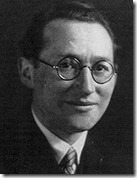 Peter Honey wrote a thought-provoking blog on the Training Journal website, where he opened by taking as read that valuing diversity is a good thing (my italics), but then he asked a really good question:
Peter Honey wrote a thought-provoking blog on the Training Journal website, where he opened by taking as read that valuing diversity is a good thing (my italics), but then he asked a really good question:
.
.
‘If we were going to start doing it at 0900 tomorrow morning, what exactly would we do?’
As usual, Peter gives a very good answer to his own question, but, also typical of him, his question really made me think.
But that was a couple of weeks ago…
The first equal opportunities employer?
The topic came back to me last night (Saturday 7 May) when I was watching a documentary about the Untold story of the Battle of Trafalgar. It looked at the foreign sailors who fought on one of Nelson’s ships of the line, HMS Bellerophon and made the point that, for the few years of the war with Napoleon, the British Navy treated its black sailors better than Europeans had ever treated black people, and better than they were to do so for many years: it gave them total equality of opportunity.
Black and other foreign sailors were treated exactly the same as all others and promoted and respected strictly according to merit. Perhaps that is the answer to Peter’s question.
After the war, however, it was back to colonialist business as usual, as the black sailors, who were no longer needed, were abandoned to the streets. You can watch the video here.
Diversity Works
I have no special expertise in the subject of diversity, just the simplistic view that evidence shows that diverse teams get better results. That’s why Peter’s question so impressed me. So I thought it was time to read the Diversity Pocketbook.
What I found was a nice little model that can apply to many different change projects. The author, Linbert Spencer, may forgive me for turning it into a simple picture.
Desire
How strong is it, really?
Definition
What do you mean by ‘diversity’?
Decision
A formal commitment from all the people who have real authority.
Determination
This is not an easy process. You need to be in it for the long haul.
Discipline
When you make progress, celebrate, but keep up your commitment
So Here’s the Deal
Linbert Spencer offers a structured process to answer Peter Honey’s question. He also gives lots of practical tips to supplement Peter’s eminently sound advice. This does matter, because in tough times like these, you can’t afford to waste any opportunity to get the best team and to get the best from your team.





